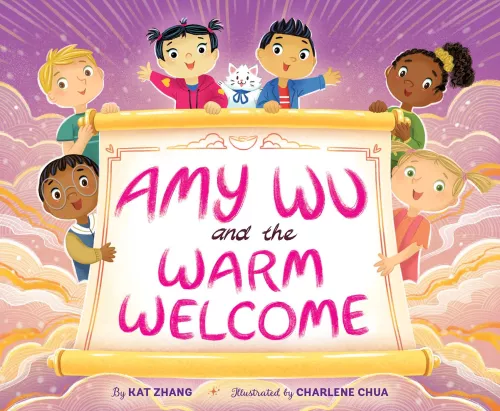Share this Book
Amy uses food to help connect with Lin. Follow Amy’s example! Talk with students about why food is an element of culture. Describe your own favorite traditional family food, how to make it, and show a picture of it to students. Tell the story of how this connects to your family and its cultural significance. Talk about what ways this food, or any food, says “welcome.”
Then have students think about their own favorite food that is meaningful to their family or culture. Ask students to research or find out the recipe and think about how it represents their family’s culture and why it is their favorite. Have students write and illustrate their recipes, along with the story of their dish and how it says “welcome,” and share them with the class. Compile them all into a “Food that Says Welcome” cookbook that you print and include in your classroom library and send as a pdf to student families. If possible, invite families together for a Read Across America pot-luck dinner that features all the welcoming dishes.
Questions for Discussion or Reflective Writing
- What ways does Amy try to make Lin feel welcome at school? How would you welcome someone new to your classroom?
- Can you think of a time you were new or had to go somewhere you did not know anyone? How did you feel? What did you do?
- What does Amy realize about Lin? How does that give her a new idea to make him feel welcome?
- Do you agree with Amy that it is never too late for a welcome? Why or why not? What can you do to make others always feel welcome and included?
Related Resources
- Activity Sheets for Amy Wu and the Warm Welcome from Simon & Schuster
- Amy Wu and the Warm Welcome Read and Draw with Charlene Chua video from Read & Learn with Simon Kids
- I’M NEW HERE: Creating a Conversation About Welcoming Immigrants & Refugees: A Classroom or Community Event Kit from Curious City
- 8 Ways to Make Students Feel Welcome on First Day of School from NEA Today
More Titles to Try
Stay on top of current education news



